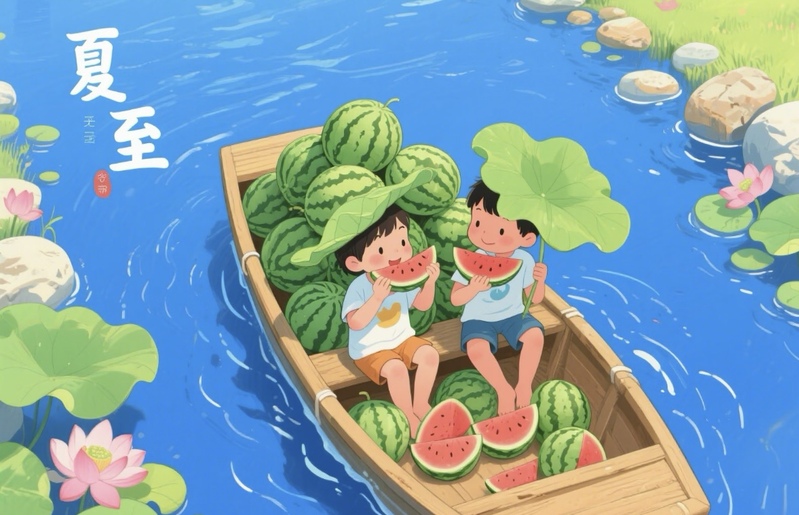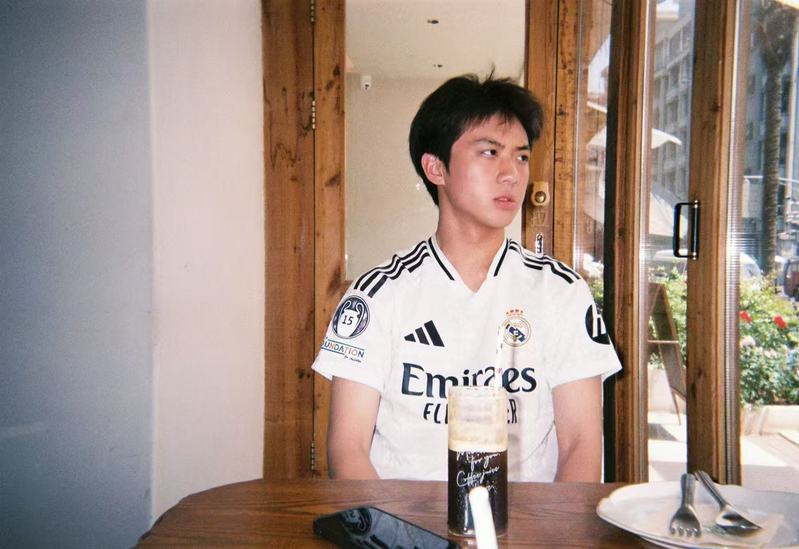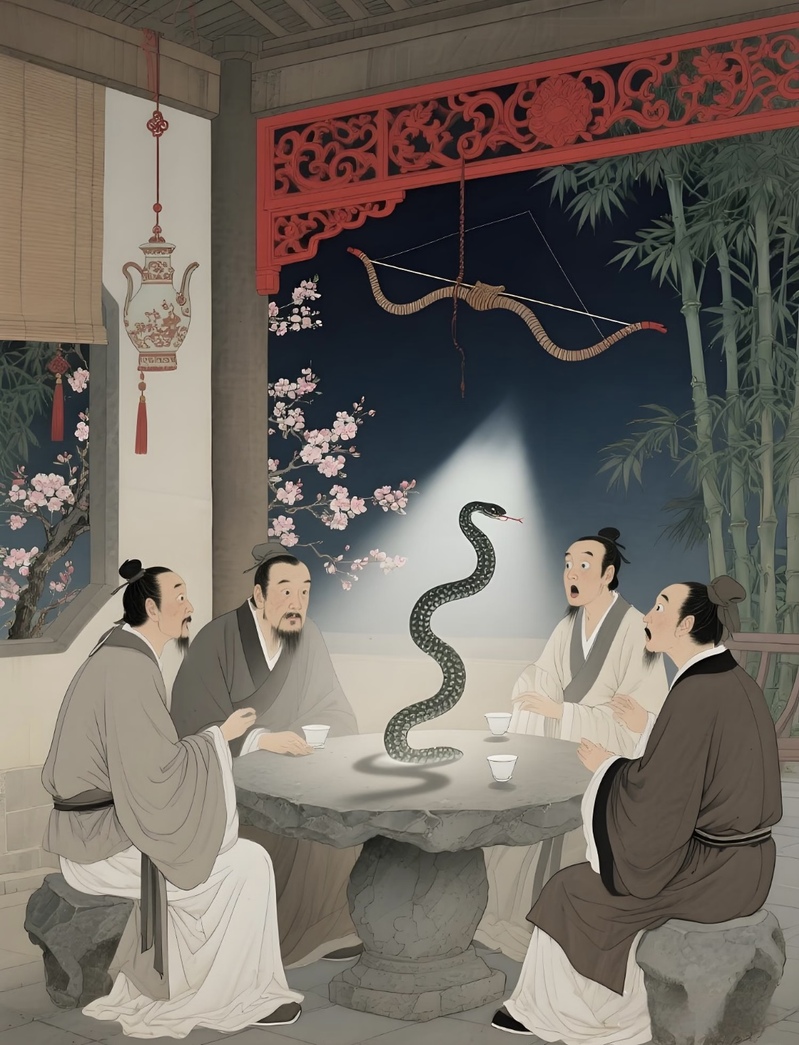在古老而智慧的中国传统文化里,二十四节气如同时间长河里璀璨的明珠,精准地标记着岁月的流转。夏至,作为其中极具特色的一个节气,不仅蕴含着独特的天文奥秘,还承载着丰富多样的传统习俗与文化故事。从白昼最长的特殊时刻,到古代别具一格的节日庆典;从奇妙的自然现象,到各地特色美食与活动,夏至的每一面都散发着迷人的魅力。今天,就让我们一同走进夏至的奇妙世界,探寻那些鲜为人知的有趣知识吧!
本期让我们跟随翻译2401班沈睿泽同学的脚步,走进骄阳似火的盛夏,探寻这个季节的独特标志。

大家好,我是翻译2401班的沈睿泽,喜欢读经典名著,读书之余的兴趣就是踢球和品鉴电影。

原文:
The traditional Chinese solar calendar divides the year into 24 solar terms. Summer Solstice (Chinese: I E), the 10th solar term of the year, begins on June 21 this year and ends on July 6.
At this time, much of the northern hemisphere receives the most hours of daylight, but it does not bring the hottest temperatures which will come only 20 to 30 days later.
In China, the 24 solar terms were created thousands of years ago to guide agricultural production. But the solar term culture is still useful today to guide people's lives through eating special foods, performing cultural ceremonies and even healthy living tips that correspond with each solar term.
The following are 6 things you might not know about Summer Solstice.
The longest day of the year
On the Summer Solstice itself, daylight lasts the longest for the whole year in the northern hemisphere. After this day, daylight hours get shorter and shorter and temperatures become higher in the northern hemisphere.
How long is the longest day in China? According to the expert Yan Jiarong, the entire day in Mohe in Heilongjiang province, located in the northernmost tip of China, lasts nearly 17 hours when you include dawn, twilight and its afterglow. Summer Solstice is the best season for viewing the aurora in Mohe, the sleepless town of China.
A public holiday in ancient times
Summer Solstice was an important festival in ancient China. As early as the Han Dynasty (260BC-220), when the
Mid-autumn Festival and the Double Ninth Festival were not as important as they are today, the Summer Solstice was already celebrated.
Before the Qing Dynasty (1644-1911), people even had a one-day holiday on Summer Solstice. According to Song Dynasty (960-1279) records, officials could have three days off during the Summer Solstice.
To celebrate Summer Solstice, women gave colored fans and sachets to each other. Fans could help them cool down and the sachets could drive away mosquitoes and make them smell sweet.
Seeing the sun turn around
Hani autonomous county of Mojiang, Southwest China's Yunnan province is located on the northern tropic. Every year on the Summer Solstice, the sun sits directly over the Tropic of Cancer and returns from north to south. Then, the amazing phenomenon known as upright pole with no shadows occurs.
The Hani people revere the sun and have always had a close bond with it. They welcome the turn-around of the sun and offer sacrifices to it.
Eating noodles
There is a saying in Shandong province which goes, eat dumplings on the Winter Solstice and eat noodles on Summer Solstice. People in different areas of Shandong province eat chilled noodles on this day. Other people around China, including those in Beijing, also have a tradition of eating noodles.
Dragon boat racing in Zhejiang
Due to the local climate, Dragon boat races have been held on the Summer Solstice day in Shaoxing, Zhejiang province rather than on Dragon Boat Festival since the Ming (1368-1644) and Qing (1644-1911) dynasties. This tradition is still in practice today, with all the attendant excitement.
Summer Solstice idiom
In Chinese, an idiom Bei gong she ying (杯弓蛇影) is related to Summer Solstice. According to the records of Fengsutong (a book about Chinese customs), written by Ying Shao from the Eastern Han Dynasty (AD25-220), a man named Du Xuan attended a banquet on Summer Solstice, where he mistook the shadow of a bow in his cup for a snake and he had to drink it out of fear.
After the banquet, he felt chest pains and a bellyache and couldn't recover even after seeing many doctors. Finally, he found he had mistaken the shadow of a red crossbow on the wall for a snake in his cup and recovered. Later, people used this idiom to refer to people who are suspicious and frighten themselves.


译文:
传统的中国太阳历将一年分为二十四个节气。夏至(英语:Summer Solstice),是一年中的第十个节气,今年从6月21日开始,到7月6日结束。
此时,很大一部分北半球地区接受到最长的日照时间,但并不会带来最热的温度,这将在20到30天后出现。
在我国,二十四节气是几千年前为了指导农业生产而创造的。但是节气文化至今,对引导人们的生活仍然有
用,包括通过食用特殊食物、进行文化仪式,甚至是与每个节气对应的健康生活小贴士。
以下是关于夏至你可能不知道的六件事情。
一年中的最长一天
夏至日本身北半球持续时间最长的白昼。在这一天之后,白昼会越来越短,北半球的温度也会升高。
在中国,最长的白昼是多乐市,位于中国最北端黑龙江省。据专家颜家荣介绍,如果算上黎明、黄昏以及余辉的话,多乐市一整天几乎持续17个小时。夏至是观赏多乐市“中国不夜城”极光的最佳季节。
古代的公共假期
夏至在古代中国是一个重要的节日。早在汉代(公元前260年-公元220年),中秋节和重阳节还没有像今天这样重要,夏至已经被庆祝了。
清代之前(公元1644年-1911年),人们甚至在夏至当天放假一天。据宋代(公元960年-1279年)的记载,官员们在夏至期间可以休假三天。
为了庆祝夏至,女人们相互之间赠送彩色折扇和香囊。折扇可以帮助降温,香囊则可以驱赶蚊虫并使其闻起来香甜。
观看太阳公转
中国云南省墨江哈尼族自治县位于北回归线上。每年夏至日,太阳直接位于北回归线上并从北方向南方返回。然后,出现了被称为“直立无影极”的惊人现象。
哈尼族人崇尚太阳,与其有着密切的联系。他们欢迎太阳的转向,并向其献祭。
吃面条
山东省有一句俗语:“冬至吃饺子,夏至吃面”。山东的不同地区人们会在这一天吃凉拌面。包括北京在内的中国其他地区也有吃面的传统。
浙江的龙舟赛
由于当地的气候原因,自明朝(1368年-1644年)和清朝(1644年-1911年)以来,浙江省绍兴市的龙舟比赛就在夏至这一天举行,而不是在端午节。这个传统至今仍然保持着,伴随着热闹的气氛。
夏至成语
在中文中,有一个成语“杯弓蛇影”与夏至有关。根据东汉时期颜邵所著的《风俗通》,一个名叫杜玄的人参加了夏至的盛宴,他误将酒杯里的弓影误认为是蛇而因恐惧而一饮而尽。
宴会结束后,他感到胸口疼痛和腹部疼痛,即使看了很多医生也无法康复。最后,他发现自己误将墙上的一个红色弓影当作酒杯中的蛇,并且很快康复。后来,人们用这个成语来形容那些多疑和吓坏自己的人。

四六级关键词,接住啦
词汇积累:
solstice [ˈsɑːlstɪs] n. (夏或冬)至
hemisphere [ˈhemɪsfɪr] n. 半球;(尤指)北半球,南半球
daylight [ˈdeɪlaɪt] n. 日光;白天
temperature [ˈtemprətʃər] n. 温度;气温;体温
agricultural [ˌæɡrɪˈkʌltʃərəl] adj. 农业的;农用的
ceremony [ˈserəmoʊni] n. 典礼;仪式
correspond [ˌkɔːrəˈspɑːnd] vi. 通信;符合
northernmost [ˈnɔːrðərnmoʊst] adj. 最北端的
dawn [dɔːn] n. 黎明;曙光
twilight [ˈtwaɪlaɪt] n. 暮光;黄昏
afterglow [ˈæftərɡloʊ] n. 余晖,落照
aurora [ɔː'rɔːrə] n. 极光;曙光
短语积累:
living tips 生活小贴士
relate to 与…有关
out of fear 出于恐惧;由于害怕
refer to 提到;查阅
四六级暴击,小试牛刀
Question 1:When does the hottest time usually come in the northern hemisphere?
A. On the Summer Solstice.
B. About 20 - 30 days after the Summer Solstice.
C. Before the Summer Solstice.
D. There is no fixed time.
Answer: B
解析:根据文章第一段“At this time, much of the northern hemisphere receives the most hours of daylight, but it does not bring the hottest temperatures which will come only 20 to 30 days later.”可知,北半球最热的时候通常在夏至后20到30天,答案选B。
Question 2:Why do people in Hani autonomous county of Mojiang welcome the turn - around of the sun on Summer Solstice?
A. Because it is a beautiful natural phenomenon.
B. Because they can see the upright pole with no shadows phenomenon.
C. Because they revere the sun and have a close bond with it.
D. Because it marks the beginning of a new season.
Answer: C
解析:由文章第四段“The Hani people revere the sun and have always had a close bond with it. They welcome the turn - around of the sun and offer sacrifices to it.”可知,墨江哈尼族自治县的人们欢迎太阳的回归是因为他们崇敬太阳,与太阳有着紧密的联系,答案是C。
Question 3:Which of the following is TRUE about the Dragon boat racing in Zhejiang?
A. It has been held on the Dragon Boat Festival since the Ming and Qing dynasties.
B. It has been held on the Summer Solstice day in Shaoxing since the Ming and Qing dynasties.
C. It is not held anymore in modern times.
D. It is held to celebrate the harvest.
Answer: B
解析:根据文章第六段“Due to the local climate, Dragon boat races have been held on the Summer Solstice day in Shaoxing, Zhejiang province rather than on Dragon Boat Festival since the Ming (1368 - 1644) and Qing (1644 - 1911) dynasties.”可知,浙江绍兴自明清以来就在夏至日举行龙舟比赛,而不是在端午节,答案为B。




